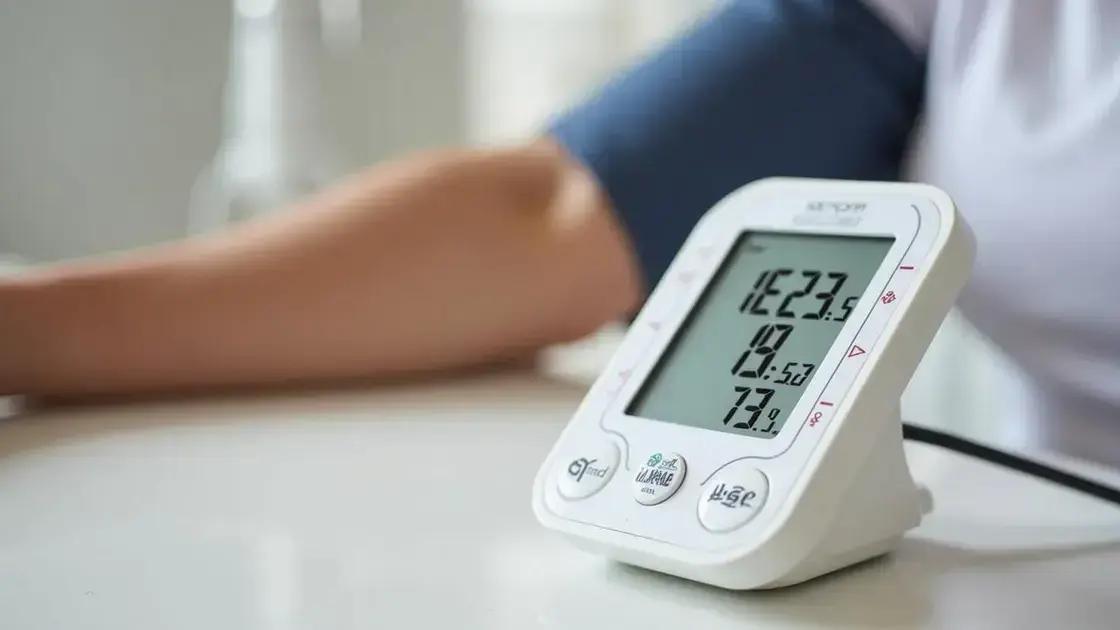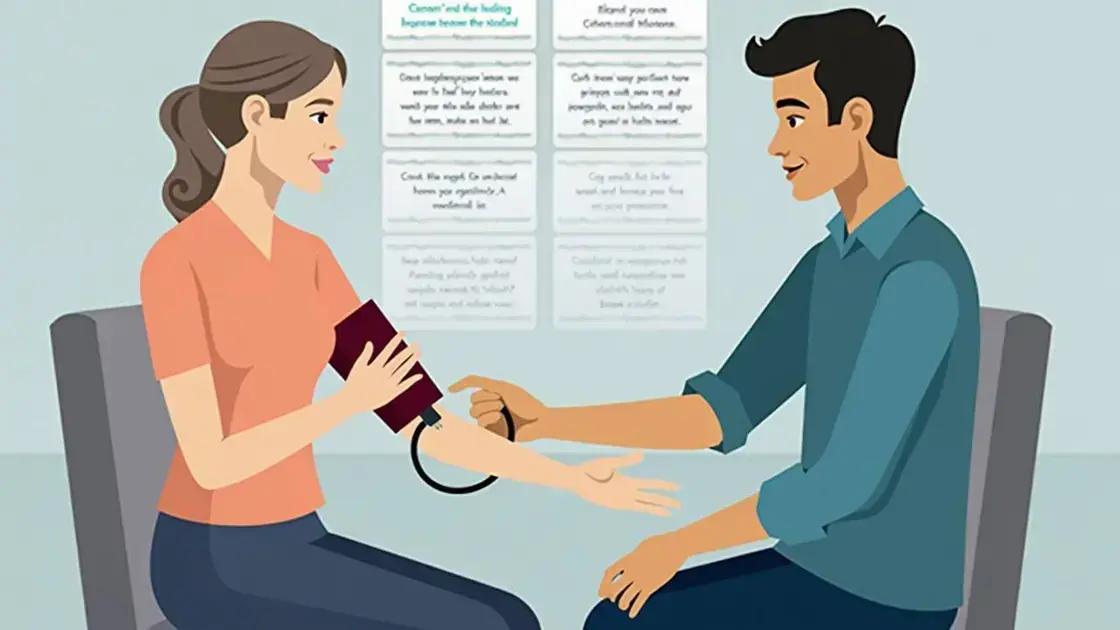Home blood pressure monitoring devices are essential for improving heart health by allowing individuals to track their blood pressure accurately. Consistent monitoring helps detect issues early, manage existing health conditions, and supports informed health decisions, thereby empowering users to take control of their cardiovascular health.
Home blood pressure monitoring devices are becoming essential tools for maintaining heart health. With the increasing awareness of cardiovascular diseases, individuals are now able to take charge of their health like never before. These devices not only empower users to keep track of their blood pressure but also provide invaluable data to healthcare professionals. In this article, we will explore how these innovative devices are enhancing heart health, the benefits of regular monitoring, and tips for achieving accurate readings.
Understanding Home Blood Pressure Monitors

Home blood pressure monitors are vital devices that help individuals track their blood pressure from the comfort of their own homes. These devices are designed to be user-friendly, allowing users to take readings without needing professional assistance.
Types of Home Blood Pressure Monitors
There are mainly two types of home blood pressure monitors: manual and automatic. Manual monitors require a stethoscope and can be complicated for some users. Automatic monitors, on the other hand, inflate and deflate automatically, making them easier to use and more popular for home use.
How They Work
Home blood pressure monitors use an inflatable cuff to restrict blood flow in the arm. Once the cuff inflates, it measures the pressure in the arteries as blood flow returns. The device then displays the readings, typically showing systolic and diastolic pressure, which are essential for understanding heart health.
Importance of Monitoring Your Blood Pressure
Monitoring blood pressure at home helps in identifying trends and fluctuations that a healthcare provider can use to assess cardiovascular health. Regular monitoring can catch potential issues before they become serious, allowing for timely intervention.
Keeping a log of your blood pressure readings can also aid your doctor in making informed decisions about your health. These devices are portable, making it easy to track your blood pressure anytime and anywhere.
Benefits of Regular Monitoring

Regular monitoring of blood pressure has numerous benefits that significantly contribute to better heart health. By keeping an eye on your readings, you can quickly identify any abnormal changes and take action when necessary.
Early Detection of Health Issues
Detecting hypertension early is key. High blood pressure often has no symptoms, so monitoring it regularly allows you to notice trends over time. Early identification can lead to timely intervention and prevent serious health conditions like heart attacks or strokes.
Better Management of Existing Conditions
If you already have a heart condition or hypertension, regular monitoring is crucial. It provides data that helps healthcare providers adjust your treatment plan effectively. This continuous feedback loop contributes to better management and improved outcomes.
Empowerment and Informed Decisions
Monitoring your blood pressure regularly empowers you to take part in your healthcare. When you know your numbers, you can make informed choices about your lifestyle, diet, and medications. This active involvement promotes a sense of control over your health.
Tracking Lifestyle Changes
Regular readings enable you to observe how lifestyle changes impact your blood pressure. For instance, if you start exercising or improve your diet, you can see how these changes positively affect your health. This encourages you to continue making healthy choices.
How to Choose the Right Device

Choosing the right blood pressure monitor can greatly influence the success of your health monitoring efforts. Many factors are important when selecting a device that fits your needs.
Consider Your Measurement Preference
There are two main types of blood pressure monitors: arm monitors and wrist monitors. Arm monitors are generally more accurate, while wrist monitors are portable and easier to use. Choose one based on your comfort and lifestyle.
Look for Validation
When selecting a device, ensure it has clinical validation. This means the device has been tested for accuracy against recognized standards. Look for products that have been endorsed by organizations such as the American Heart Association.
User-Friendly Features
Features can enhance the usability of your blood pressure monitor. Look for devices with clear displays, large buttons, and memory recall options for tracking your readings over time. Some monitors even connect to mobile apps for easier tracking.
Set Your Budget
Blood pressure monitors vary in price. Set a budget but remember that quality is essential. Investing in a reliable device can save you money in the long run by preventing health issues. Research reviews and find a good balance between cost and effectiveness.
Tips for Accurate Readings

To get the most accurate readings from your blood pressure monitor, consider following these essential tips.
Position Yourself Properly
Always sit in a comfortable position with your back straight and feet flat on the floor. Keep your arm at heart level while taking a measurement. This helps ensure that the reading is as precise as possible.
Use the Correct Cuff Size
Using the right cuff size is crucial for accurate readings. A cuff that is too small or too large can give misleading results. Follow the manufacturer’s guidelines to find the appropriate size for your arm.
Avoid Certain Activities
Avoid drinking coffee, smoking, or exercising at least 30 minutes before taking your reading. These activities can temporarily raise your blood pressure and affect accuracy.
Take Multiple Readings
For the best results, take multiple readings at different times of the day. Record them in a journal or use an app. This will help identify patterns and provide valuable information for your healthcare provider.
In Conclusion: Enhance Your Heart Health with Home Monitoring
Home blood pressure monitoring devices play a crucial role in boosting heart health. By understanding how these devices work and the benefits they provide, you can take proactive steps in managing your cardiovascular health.
Choosing the right device and following best practices for accurate readings can empower you to track your blood pressure effectively. Regular monitoring allows for early detection of potential health issues, better management of existing conditions, and encouragement of healthy lifestyle choices.
Whether you are monitoring your blood pressure yourself or sharing data with your healthcare provider, these devices offer an accessible way to prioritize your heart health. Embrace the technology available and take control of your health journey today.
FAQ – Frequently Asked Questions about Home Blood Pressure Monitoring Devices
Why is it important to monitor my blood pressure at home?
Monitoring your blood pressure at home allows for early detection of issues, better management of existing conditions, and empowers you to take control of your health.
How do I choose the right blood pressure monitor?
Choose a monitor based on your measurement preference, ensure it has clinical validation, look for user-friendly features, and set a budget that balances quality and cost.
What are some tips for getting accurate blood pressure readings?
Position yourself properly, use the correct cuff size, avoid caffeine and exercise before measuring, and take multiple readings for consistency.
How often should I check my blood pressure?
It is recommended to check your blood pressure regularly, especially if you have a history of hypertension or related health conditions.
Can lifestyle changes affect my blood pressure readings?
Yes, lifestyle changes such as diet, exercise, and stress management can significantly impact your blood pressure readings over time.
What should I do with my blood pressure readings?
Keep a record of your readings and share them with your healthcare provider to help manage your health and medications effectively.












